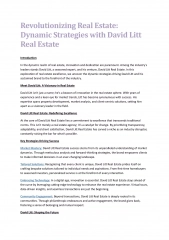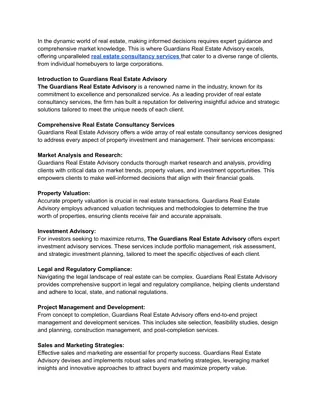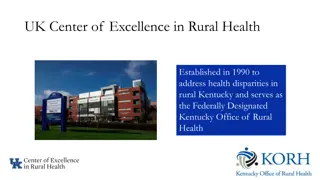Kentucky Real Estate Commission Legislative Proposal
Updates on Kentucky Real Estate Commission's legislative proposal, including changes in continuing education requirements, licensure period, fees, and terminology. A comparison with surrounding states' licensing cycles and fees is also provided.
Download Presentation

Please find below an Image/Link to download the presentation.
The content on the website is provided AS IS for your information and personal use only. It may not be sold, licensed, or shared on other websites without obtaining consent from the author.If you encounter any issues during the download, it is possible that the publisher has removed the file from their server.
You are allowed to download the files provided on this website for personal or commercial use, subject to the condition that they are used lawfully. All files are the property of their respective owners.
The content on the website is provided AS IS for your information and personal use only. It may not be sold, licensed, or shared on other websites without obtaining consent from the author.
E N D
Presentation Transcript
Canadian Malting Barley Innovation Canadian Malting Barley Innovation 2014 North American Barley Researchers Workshop Michael Brophy Brewing and Malting Barley Research Institute (BMBRI)
BMBRI Activities Representing malting, brewing industry members in barley breeding and research Breeding and Research Grants (increasing) Provide industry s quality and agronomy trait requirements to breeders and researchers (see www.bmbri.ca for details) Collaboratively test and evaluate outcomes (elite cultivars) from breeding programs and provide related reports to industry members and the official variety registration process Communicate/Collaborate with other organizations in the value chain
BMBRIs List of Desirable Quality Traits BMBRI s List of Desirable Quality Traits Characteristic In Breeding For Research Aribinoxylan Measurement + Balanced Modification + Consistent Barley Quality Across Regions + Sensory Properties + + Enzyme Activities * + Extract + + Fermentability + FHB Resistance + Hull Adherence + Long Term Germination + Pre Harvest Sprout Tolerance + Protein* + Varietal Identification +
BMBRIs List of Desirable Quality Traits BMBRI s List of Desirable Quality Traits Protein-Enzyme Quality Profiles: Moderate protein (11-12.5%) / High enzymes (>150 DP, >53 alpha amylase) Moderate protein (11-12.5%)/Moderate enzymes (125 150 DP, >53 alpha amylase) Moderate protein (11-12.5%)/ Lower enzymes (<125 DP, <53 alpha amylase) Low protein (<11%) / low enzymes (<125 DP, <53 alpha amylase)
BMBRIs List of Desirable Quality Traits BMBRI s List of Desirable Quality Traits Adjunct 6R (Declining) All Malt 2R (Craft) (Increasing) >80 (High as possible) < 11.5 < 5.0 Adjunct 2R (Mainstream) Extract, fg, db % Protein, db% Sol. Protein, db% KI (S/T), % Enzymes/DP, L >80 (High as possible) > 11.5 > 5.0 >79 (High as possible) > 11.5 > 5.0 38-45 low/med 100-120 : 120- 140 Variable, 135 Max < 200 42 47 med/high 120-140 : >140 42 47 med/high 125-145 : >145 Low as possible Low as possible Beta Glucan, mg/L FAN, mg/L > 200 > 200
Some Recent Improvement in Malting Barley Varieties (2000 -2014) : Lower betaglucans/lower soluble protein in combination (better modification) More desired barley and malt protein range Range of FAN to suit different brewing needs Range of enzyme packages to suit different brewing needs Lower malt peeling Better extracts and fermentability Some improvement in agronomic productivity for growers (# of new varieties 110% to 113% of AC Metcalfe)
Some* Recently Registered Improved 2R Malting Varieties (2008 -2014): Major, Cerveza, AAC Synergy - AAFC Brandon CDC Meredith, CDC Kindersley, TR11127 (recommended in 2014) - U of Sask Bentley - FCDC Lacombe Merit 16, ABI Voyager - BARI Fort Collins Polarstar (Loxless CDC Kendall) , TR 07921 (Loxless CDC Copeland, recommended in 2014) Sapporo/U of S/U of S * A number of other 2R varieties have also been registered (or recommended) in Canada in past five years, e.g., ------------
Current Hot Topics of Interest (BMBRI Technical Committee): Next step up in agronomic yield improvement (i.e., above CDC Meredith, Bentley, Merit 16, AAC Synergy, TR11127, etc) to keep malting barley competitive Market demand now primarily 2R malting varieties - for adjunct brewing and all malt (craft) brewing; 6R declining Interest and need for more breeding work and sources for Loxless trait Recent quality innovations and attributes such as heat-stable enzymes are of interest Flavour: Understanding and finding objective measurable flavour component attributes are of interest to certain brewers. Future ability to transfer such flavour components into breeding programs? Balanced modification: Some new varieties may have reached the lower required limits for betaglucans, while also ensuring right balance of proteolytic modification BMBRI updated guidelines on malt quality preferences for different brewing segments (e.g., all malt 2R vs. adjunct 2R )
Number Varieties Registered in Canada vs. Market Uptake: Varieties are recommended for registration in Canada by the Prairie Recommending Committee for Oats and Barley (PRCOB) on the basis of equal to or better than commercial check varieties under independent Cooperative and Collaborative Tests Registration does not mean commercial acceptance or market approval/uptake System has allowed a MUCH greater number of Registered varieties than pulled into commercial production Decision on commercial production by growers and/or marketers is at different level Will this system continue following current Canadian federal regulatory review?
Current challenges/opportunities for barley production in Canada Challenges Declining/stable barley acres and production Competition from other cereals within the grain crop rotation Maintaining/increasing investment in barley breeding and research Opportunities Great international reputation of Canada s varieties and breeding programs Potential for barley as the cereal crop in Canola rotations New Grower/industry/Government R & D funding partnerships - AIP Barley Research Cluster
New Canadian Barley Research and Innovation Cluster Major Government of Canada funding under its Growing Forward II (GF II) Agri Innovation Program (AIP) for agricultural research A separate Barley Cluster exists within the AIP program funding Federal Government has announced close to $8 million for this Barley Research Cluster over five years (2013 2018) Federal AIP funding is conditional on initial industry funding and industry-led projects BMBRI + a number of grower and other funding agencies are partnering to provide this industry -led funding and projects decision. Overall AIP Barley Cluster is being led by Alberta Barley (Alberta Barley Commission). Ref. Garson Law
BMBRI Supported Malting Projects within Barley Innovation Cluster (2013-2018) At AAFC Brandon Research Centre : Breeding 2R malting barley varieties for western Canada; Barley Germplasm with Improved FHB Resistance At University of Saskatchewan Crop Development Centre: Breeding 2R malting barley varieties for Western Canada; Genetic markers for Agronomic Traits and Disease Resistance At Alberta Agriculture Field Crop Development Centre: Enhancing selection for malting quality in 2R and hulless barley; Linking Enzymes to Disease Resistance Above programs using BMBRI desired trait guidelines, but are subject to annual review
BMBRI Supported Malting Projects within Barley Innovation Cluster (2013-2018) At AAFC Lacombe Research Centre: Effect of pre-harvest desiccant application on seed germination, yield and quality of malting barley; Effect of plant growth regulators on yield and quality of malting barley; Quality and yield response of malting barley varieties to increasing nitrogen rates At AAFC Charlottetown Research Centre: Development of improved cultural practices for malting barley production in Eastern Canada
Thank You Questions?























